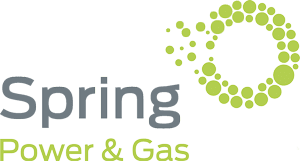Maryland Energy and Electric Suppliers
Sign Up Today To Do Your Part For The Planet And Earn Rewards!
Welcome to Maryland
Maryland is a beautiful state with abundant waterways and historic ports. People enjoy visiting The Walters Art Museum, National Aquarium, Oriole Park, and much more.
Like many other states, Maryland uses more renewable energy sources to improve the environment. Spring Power & Gas is joining that effort, and so can you by choosing which Maryland electric supplier will provide your energy.
Spring Power & Gas Helps the Environment
Maryland citizens have chosen Spring Power & Gas as their gas and electricity supplier because of our love for the environment and the local community. If you’re trying to find an energy supplier in Maryland, let us prove that we’re the right choice.
As more people join the environmentally-conscious movement, our mission gains traction and creates more opportunities for change.
Using RECS and Carbon Offsets
What sets Spring Power & Gas apart from other Maryland electric providers is that we’re an environmentally-friendly supplier using Renewable Energy Certificates (RECs) and carbon offsets.
RECs are a way to keep track of previously unused renewable energy as it enters the grid. After energy enters the grid, it’s impossible to tell where it came from, so when someone’s unused power feeds back to the grid, the owner gets a REC.
Spring Power & Gas uses RECs by buying an hour of energy from a renewable source like wind or solar for every hour of energy you use.
Carbon offsets are a way to balance out personal carbon emissions. We invest in programs that help reduce carbon emissions. We’ll neutralize any carbon-producing gas you use with investments in carbon offsets.
If you want to learn more about RECs and carbon offsets, check out our Energy FAQ page.
Our Environmentally-Friendly Plans
We set up our energy plans to match your energy use by up to 100% using RECs and carbon offsets. Our plans include the following:
- Spring Green 50 or 100: You can choose an electricity plan to match 50% or 100% of your usage with RECs.
- Zero Gas 50 or 100: You choose a gas plan that will match 50% or 100% of your usage with carbon offsets.
How Spring Power & Gas Helps Local Communities
We service across the entire state including Baltimore. We know having an environmentally-friendly world means thinking big and small. That’s why we focus on community groups as well as international ones. We like to do this not only because it’s good for the environment but because it encourages others to join the cause.
Any local Maryland nonprofit organization sharing our values is eligible to partner with us on projects to improve the state’s environment.
Check out our press page to learn more!
Our Environmental Fund
The Spring Power & Gas Environmental Fund is a private fund we created to support environmentally-focused nonprofits. These organizations can be anywhere in the world as long as they match our values about the environment.
Our values include environmental accountability and sustainability, creating conscientious communities, and having long-term plans to improve the environment.
We’ve worked with:
- EarthSpark International
- Earthwatch Institute
- Alliance for a Living Ocean
- Bikemore
As a Spring Power & Gas customer, you automatically contribute to these funds monthly.
We Have a Rewards Program!
If you choose our Spring Green or Zero Gas energy plans, you’ll become a member of our Spring Power & Gas Rewards program and receive $25 in monthly rewards. Rewards include discounts for restaurants, grocery stores, retail, and travel. You’ll also be eligible for giveaways and can enter multiple times!
Join Us Today!
We care about Maryland’s environment and want to preserve every aspect. If you’re looking for a way to help the environment without making significant changes in your daily life, make Spring Power & Gas your Maryland energy provider.
Contact us to learn how you can easily switch to Spring Power & Gas and enjoy membership benefits with various energy options.
If you’re ready to make the switch, enroll in one of our plans today!
